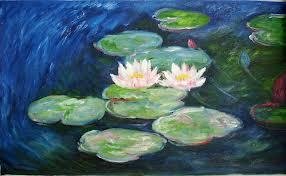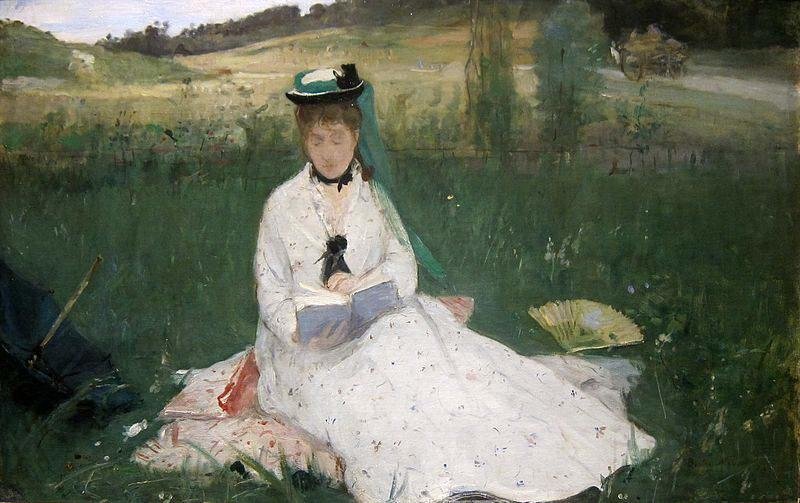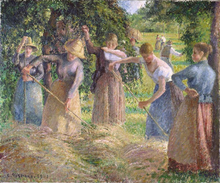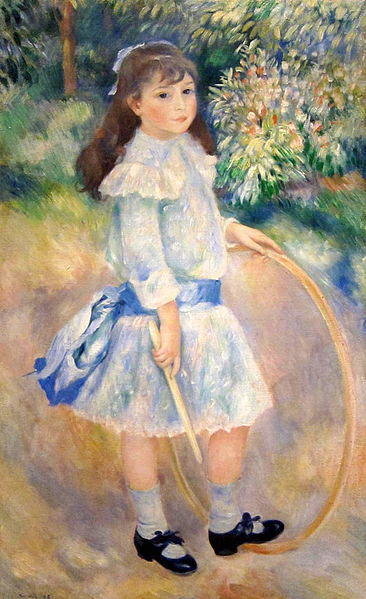Born in Paris, France, in 1840, Claude Monet is considered to be the founder of impressionist style and philosophy in painting. Throughout his career, Monet portrayed consistence and prolific application of impressionism philosophy in his paintings, which emphasized on his perceptions of nature “as it is”.
In fact, one of his early paintings, “the Impression Sunrise”, is considered the foundation of the impressionist movement. Monet believed that his work was based on scientific study of life and nature (Rewald, 2009). Therefore, most of his works were paintings of various aspects of nature, especially landscapes and real-life scenarios.
Monet’s painting “The Water Lilies” is an example of his work that portrays how Monet viewed and valued the nature. This painting indicates that the painter appreciated it and sought to present the aspect of nature as it appeared in the environment. The painting, which was done using oil on canvas style, depicts a scenery in a Pond, somewhere in France.
It shows an aesthetic scene created by light reflection by water and several water lilies on the water surface. According to analysts, Monet used his view of nature with an aim of appreciating the nature and inspiring human’s appreciation of their world.

Figure 1: Claude Monet’s Water Lillies, 1919 (Rewald, 2009)
It is most likely that Monet’s target audience was the public in general. It was probably meant to show off the beauty of pods in Paris. The color in the painting indicates how the painter used different colors to depict nature. Light reflection by water under the water lilies is a major aspect of the painting. It provides an indication that Monet wanted to impress the audience with the beauty of surrounding nature.
In fact, this 1919 painting was done during the last days of Monet’s work and life, after over seventy years of painting. During this time, Monet had already developed his impressionist idea and decided to paint landscape throughout his remaining days.
As aforementioned, Monet’s Water Lilies painting belongs to the impressionist era. Therefore, it is worth reviewing the meaning of the19th century artistic style and philosophy. Impressionism comes from the French term Impression, which was derived from Monet’s earlier work “Impression, soleil levent” (Impression, Sunrise).
However, it is worth noting that Monet did not use this term to refer to his idea, but rather Louis Leroy, an art critic, used coined the term “Impressionism” to refer to the movement that was started by artists like Claude Monet (Rewald, 2009).
In paintings, Impressionist style has a number of unique characteristics that are worth mentioning. For instance, they have a relatively small size and a small thickness. In addition, the paintings use brush strokes to depict visible scenarios using a mixture of colors. Normally, the paintings depict use of bright colors that are appealing to the viewer’s eye, with an aim of catching people’s attention.
The composition of the impression painting, as shown in “The Water Lilies”, is relatively open. In addition, such paintings emphasize on the use of light to show various aspects of the scene. The light falls on the surface of the objects revealing the aesthetic aspect of the colors used.
Colors are also applied side-by-side, a technique that was used to ensure a good mixing of colors to create an aesthetic and vibrant surface. Monet’s work also shows how complementary colors are used to obtain dark colors, such as dark and grey tones. It is worth noting that Monet avoided black paint, but mixed complementary colors to achieve gray and dark tones.
Moreover, impressionism emphasizes on the subject matter. In this case, Monet’s work depicts nature “as it is” and the beautifulness associated with it. In addition, Impressionist style in painting emphasized on time and space. Light was used to depict the nature as it appears during the day. Most impressionist painters avoided depicting night scenes (Denvir, 2010). This is one major aspect of impressionism, which Claude Monet displayed in his Water Lilies painting.
Apart from Monet, a number of other artists took advantage of the premixed paints available in the European art during the century. For example, Berthe Morisot’s “Reading” was painted in 1873 and depicts a woman reading a book, probably the Bible, while seating on grass in a field somewhere in France. Other examples include Camille Pissaro’s “Hay Harvest at Eragny” (1901) and Renoir’s “Girl with a Hoop” (1885).

Figure 2: Berthe Morisot’s Reading, 1873 (Denvir, 2010).

Figure 3: Camille Pissarro’s Hay Harvest at Éragny, 1901 (Moskowitz & Sérullaz, 2009).

Figure 4: Pierre-Auguste Renoir, Girl with a Hoop, 1885 (Rewald, 2009)
Reflection
Studying Monet’s life and work shows that the impressionist artists emphasized on common and natural objects and scenes. The style avoids the use of imaginations, which contradicts the earlier styles. In addition, they avoid religious and political topics in their work. The presentation of nature is achieved because premixed colors were readily available in the market. These are issues worth learning.
The study of impressionist style using such examples as “The Water Lilies” has improved the way I view the nature. It has shown that an emphasis on representing the natural environment attracts human attention. In addition, I have realized that people should appreciate the nature. Therefore, Monet’s Water Lilies can be rated 9 out of 10 because it is simple yet attractive.
In addition, it depicts things that are there in the environment, yet we pay little attention. It should also be rated high because it acts as a way of inspiring people to protect their environment. The painting means that students studying art should focus on simple but important aspects of life. In my research, I would like to learn how impressionist artists changed the way we view nature and how they have inspired modern art.
References
Denvir, B. (2010). The Thames and Hudson Encyclopaedia of Impressionism. London: Thames and Hudson
Moskowitz, I., & Sérullaz, M. (2009). French Impressionists: A Selection of Drawings of the French 19th Century. Boston and Toronto: Little, Brown and Company
Rewald, J. (2009). The History of Impressionism. New York: The Museum of Modern Art.